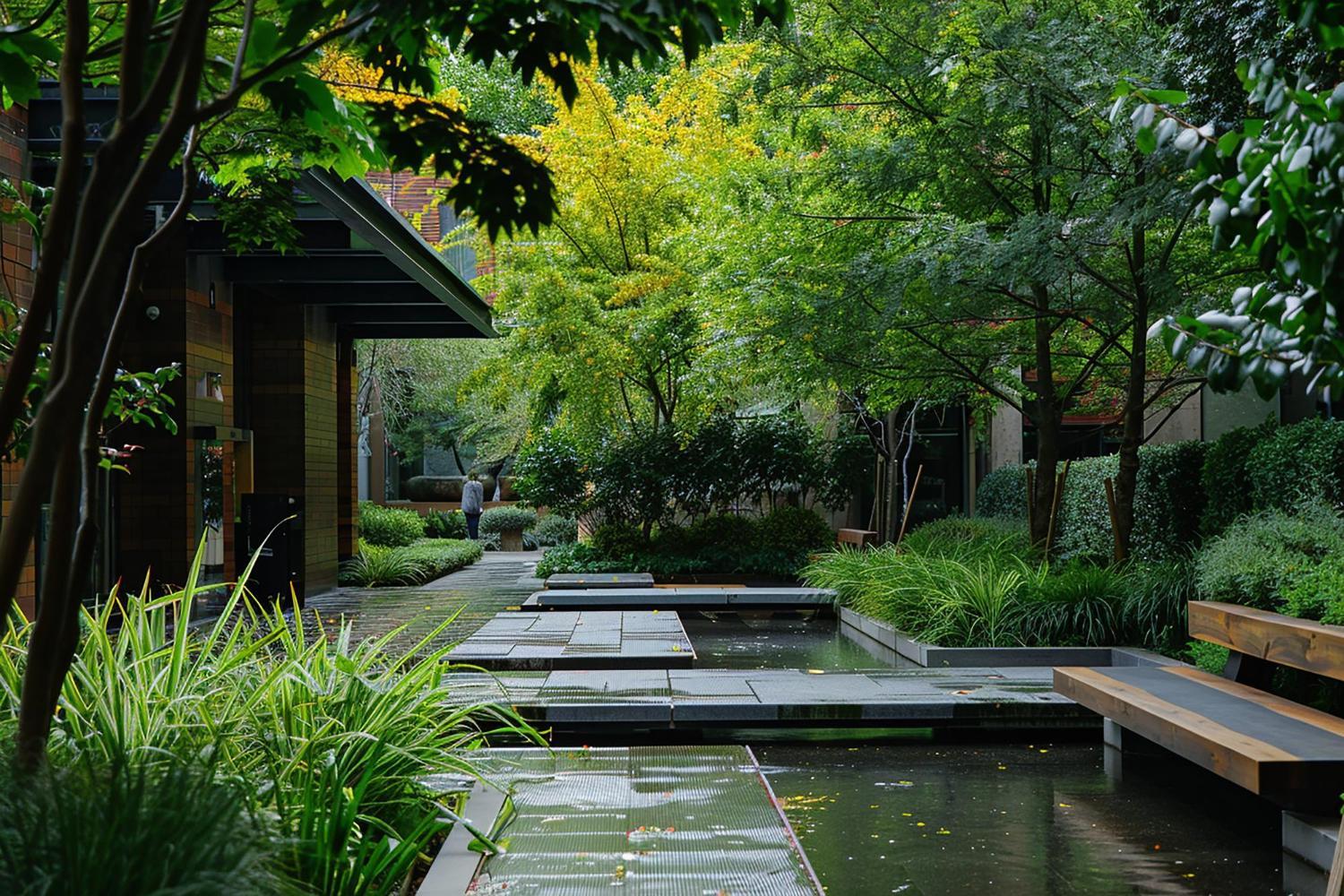The art of garden design is a profound expression of culture, philosophy, and humanity's relationship with the environment. While our local traditions often shape immediate perceptions of what a garden should be, a truly expansive view reveals an astonishing diversity of aesthetic principles across the globe. Each region cultivates unique approaches.
These distinct approaches are influenced by a myriad of factors, including climate, available resources, and deeply held societal values. The challenges posed by diverse environments, from arid deserts to temperate forests, have historically spurred ingenious design adaptations. These factors shape both the form and function of gardens in profound ways.
Understanding these varied aesthetic frameworks is more than an academic exercise; it offers invaluable insights for contemporary landscape design. When we examine how different cultures interpret space, light, water, and plant material, we uncover innovative solutions and fresh perspectives that can significantly enrich our own creative endeavors.
From the meticulously arranged dry landscapes of Japan to the sprawling, symmetrical parterres of French châteaux, and the charming, abundant borders of English cottages, each style tells a unique story. These narratives are woven from centuries of tradition, artistic movements, and evolving societal needs, reflecting distinct cultural aspirations.
This article aims to embark on a journey through some of the world's most influential garden aesthetics, highlighting their distinguishing features and the cultural contexts that shaped them. Our objective is to illuminate how these diverse design languages offer a wealth of inspiration for any outdoor space, encouraging a more expansive creative vision.
Distinct Approaches to Outdoor Beauty ✨
1. The Serenity of Japanese Gardens 🇯🇵
Japanese gardens are renowned for their profound sense of tranquility, minimalism, and deep symbolic meaning. They are designed as places for contemplation and spiritual reflection, often drawing inspiration from Zen Buddhist principles. Elements like carefully placed rocks (representing mountains or islands), raked gravel (symbolizing water), and precisely pruned plants are arranged to create miniature, idealized landscapes.The concept of shakkei, or "borrowed scenery," is central, integrating distant views of mountains or forests into the garden's composition, blurring the lines between the cultivated and the wild. This meticulous attention to detail ensures every component contributes to an overarching sense of harmony and balance, reflecting the Japanese aesthetic of wabi-sabi.Water, whether real or symbolized by sand, plays a crucial role, representing purity and renewal. Pathways are often winding, encouraging slow, deliberate movement and a meditative experience. Mosses, evergreen trees, and carefully selected flowering plants are used sparingly to evoke authentic settings. These gardens create a peaceful sanctuary that invites introspection and connection with a stylized world.
2. The Grandeur of French Formal Gardens ⚜️
In stark contrast, French formal gardens embody principles of order, symmetry, and human mastery over the landscape. Characterized by expansive, geometrically precise layouts, these gardens feature elaborate parterres – intricate patterns created with clipped hedges and colored gravel – grand avenues, and perfectly manicured lawns. Water is used dramatically in fountains and canals, reflecting the sky and surrounding architecture, further emphasizing structured elegance.The design philosophy behind French formal gardens is rooted in classical ideals, emphasizing rationality and the imposition of human will upon the landscape. Long sightlines and carefully managed perspectives guide the eye across vast distances, creating a theatrical experience. Plantings are often monochromatic or limited in color palette, with emphasis placed on form and texture achieved through rigorous pruning. These gardens are architectural extensions, designed for public display and ceremonial gatherings.
3. The Lushness of English Cottage Gardens 🌸
English cottage gardens offer a delightful departure from formal grandeur, embracing an informal, abundant, and often romantic aesthetic. Historically originating from practical gardens of rural cottages, they evolved into a style characterized by dense planting, mixed borders overflowing with a diverse array of flowers, herbs, and even vegetables. The emphasis is on a seemingly effortless charm, though careful planning is essential to achieve their characteristic "controlled wildness."This style celebrates biodiversity and the beauty of plant growth, often incorporating winding paths, quaint seating areas, and traditional garden structures. Color is celebrated, with vibrant combinations and a layering of textures that create visual depth throughout the seasons. The cottage garden evokes a sense of nostalgia and comfort, inviting visitors to linger and discover hidden details among the lush foliage. It is a testament to the idea that beauty can be found in abundance and a gentle, harmonious relationship with plant life.
Key Takeaways for Inspired Design 💡
Exploring global garden aesthetics reveals that there is no single "correct" approach to creating outdoor spaces. Instead, each culture offers a valid and inspiring perspective, shaped by unique environmental, historical, and philosophical considerations. These diverse design languages underscore the adaptability and creativity inherent in human efforts to craft meaningful and beautiful landscapes.
The lessons learned from these international styles are profound. From the meditative restraint of Japanese gardens to the bold statements of French formal designs and the welcoming embrace of English cottage gardens, designers can draw upon a rich lexicon of ideas. This expanded understanding enables a more nuanced and innovative approach to any project, fostering environments that are both visually appealing and deeply resonant.
At SULLIVAN LANDSCAPE SERVICE LIMITED, we believe that understanding these global influences empowers us to craft truly exceptional outdoor environments. By integrating diverse principles and a keen appreciation for varied aesthetics, we assist our clients in realizing visions that are both distinctive and perfectly suited to their aspirations. Let us help you explore the boundless possibilities for your landscape.



comments